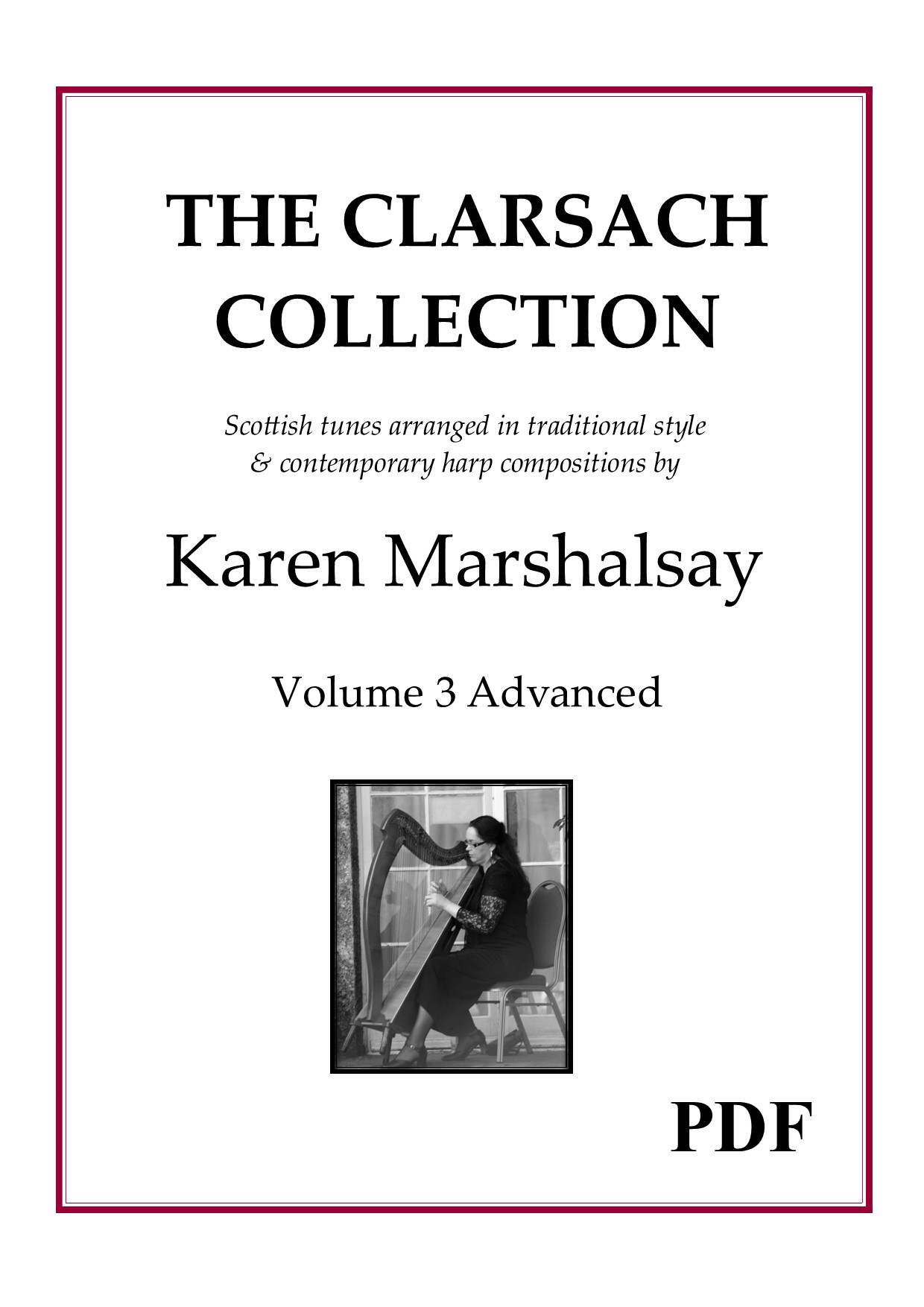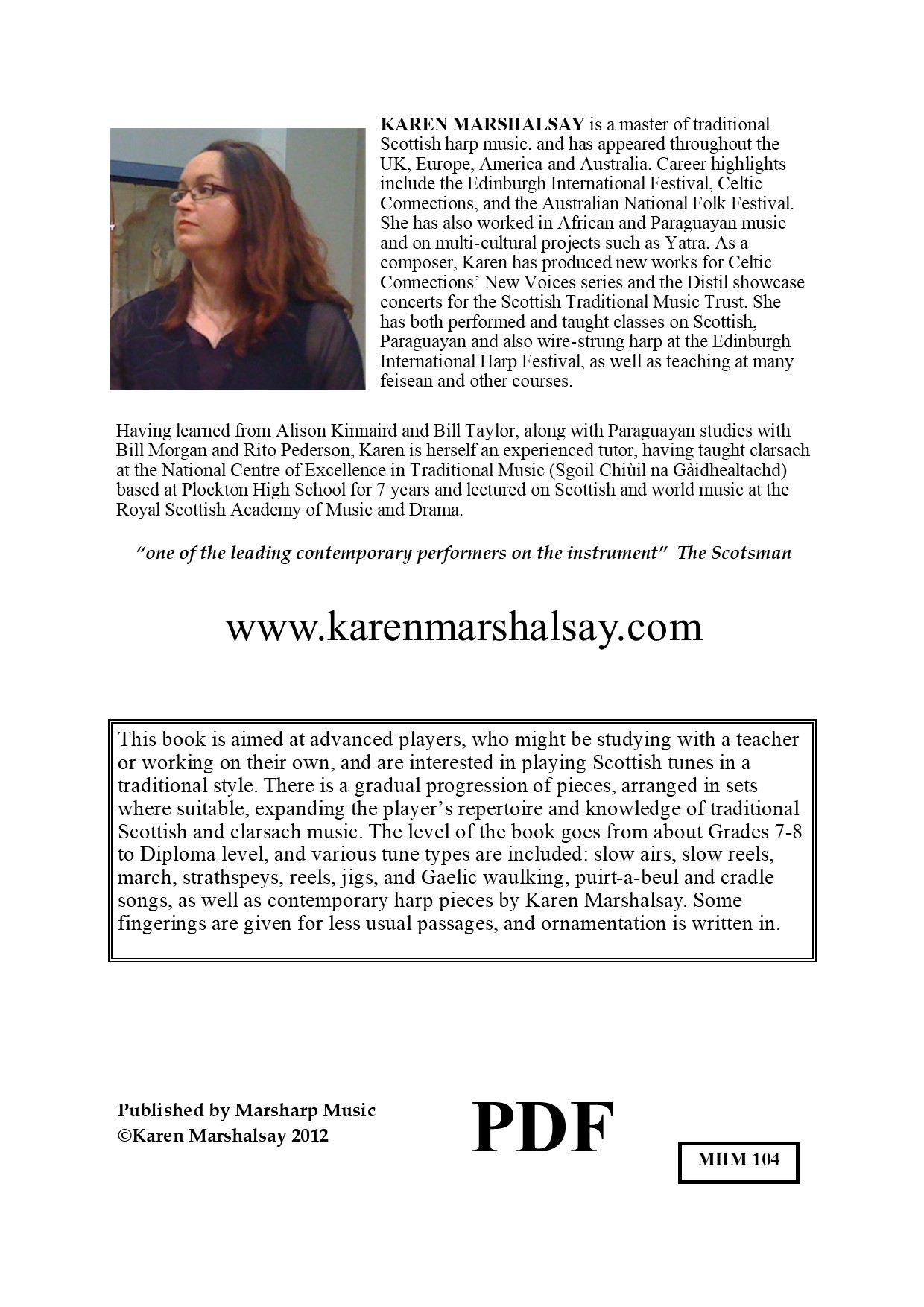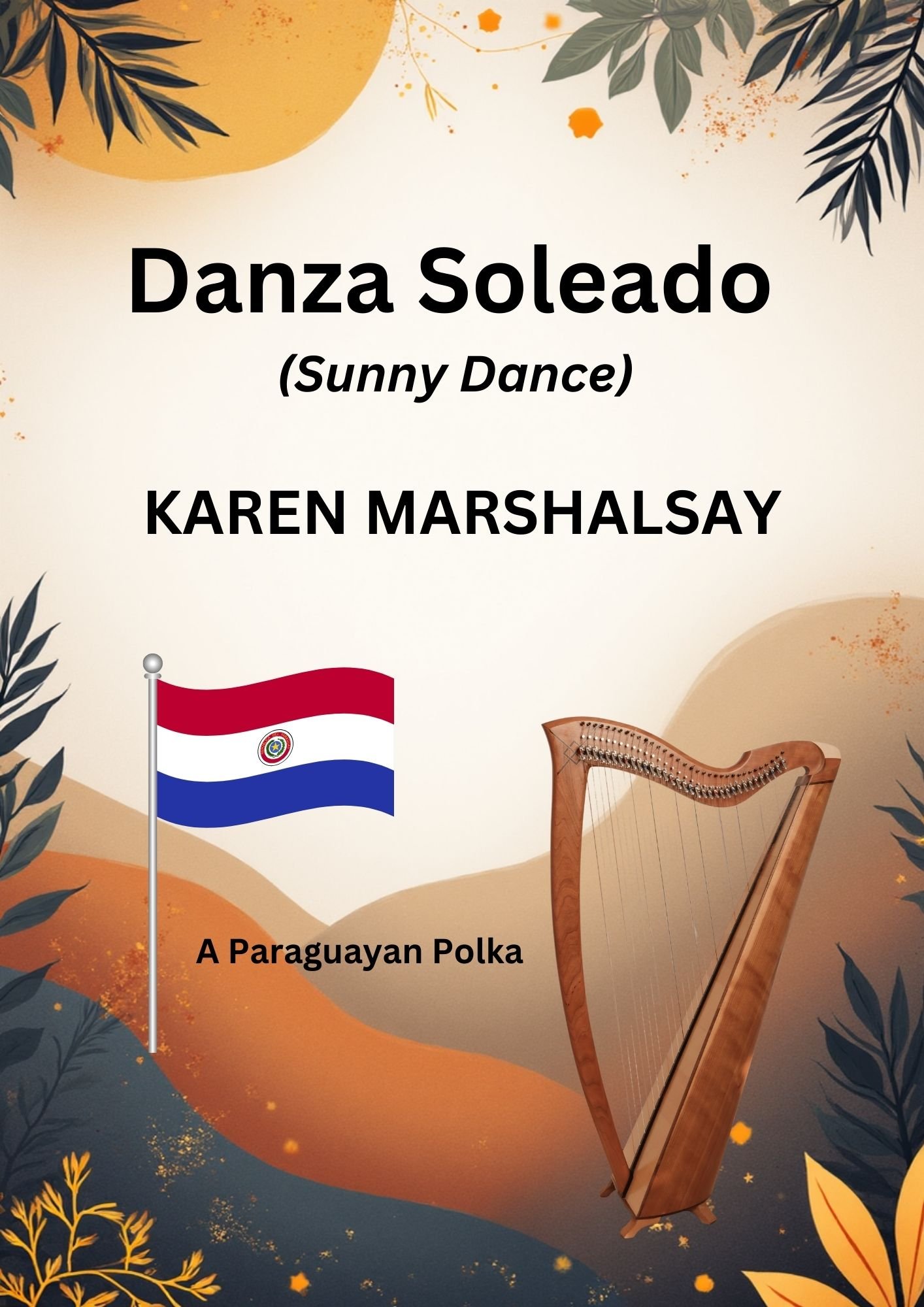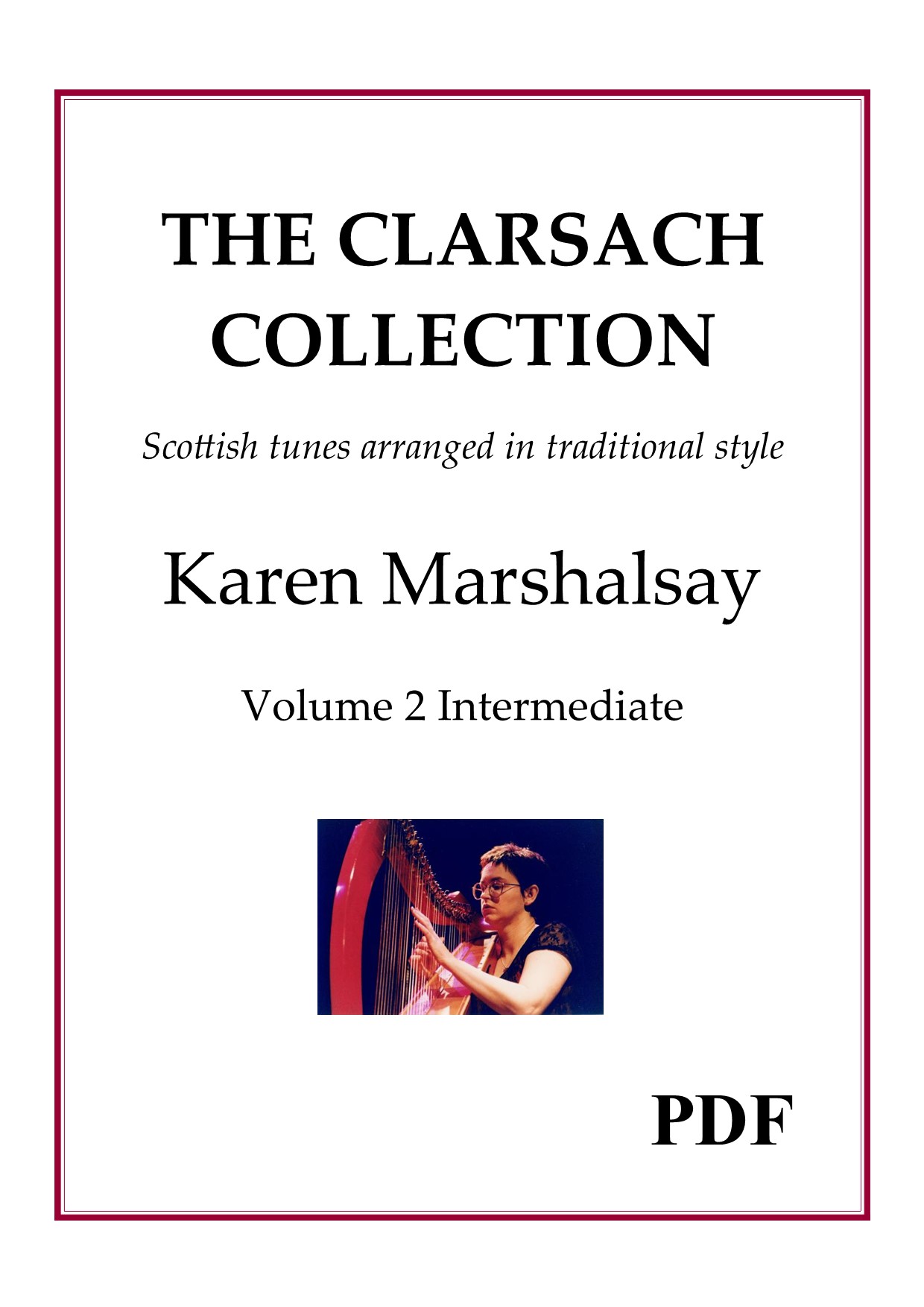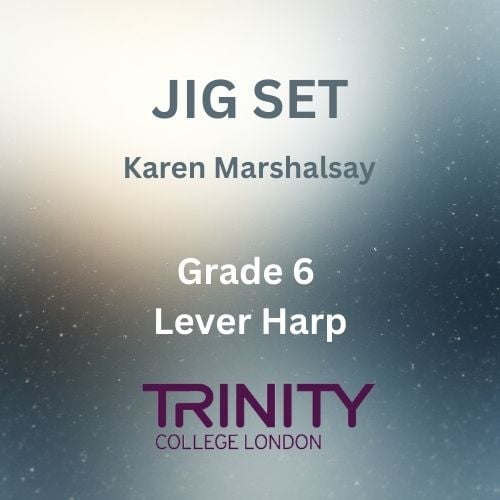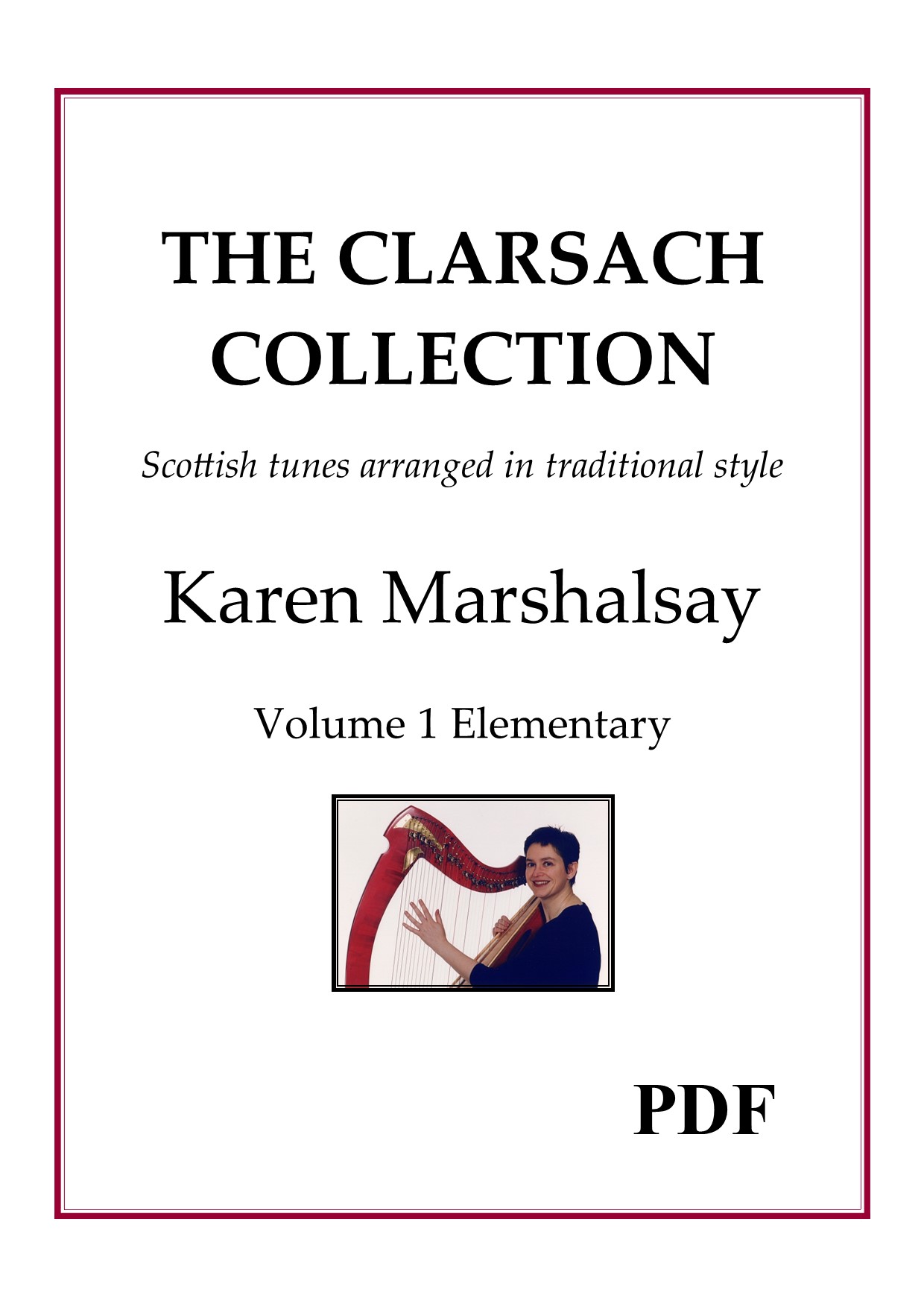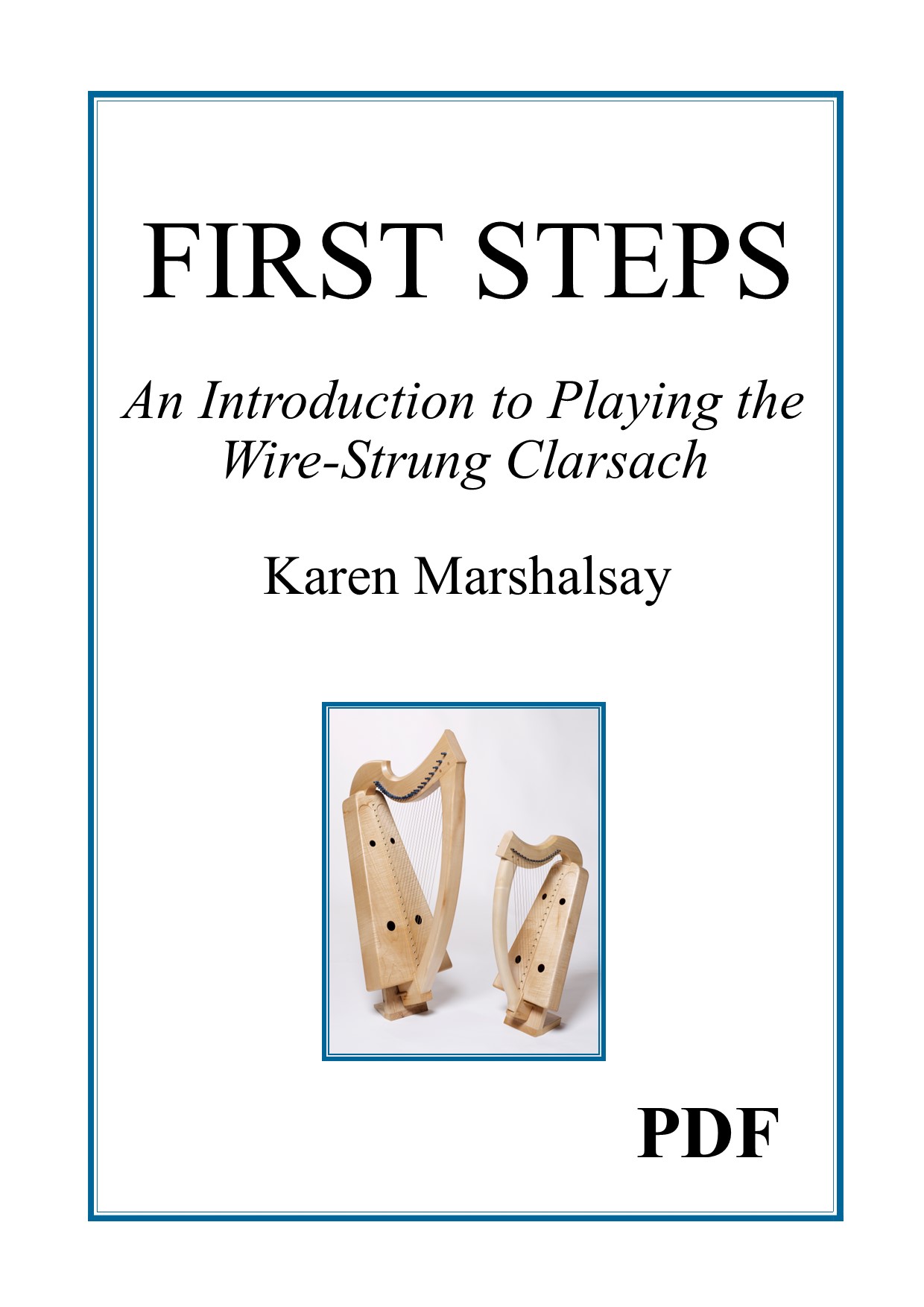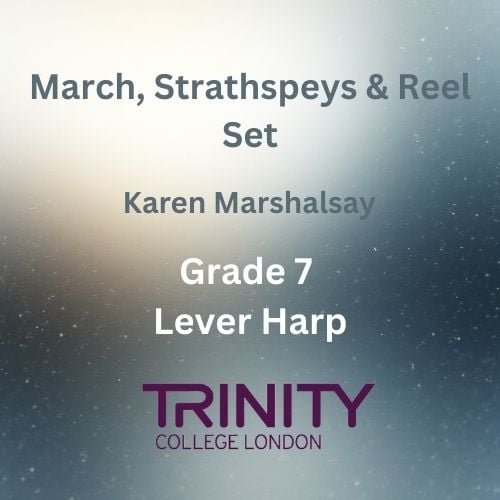The Clarsach Collection Vol 3 Advanced £12
On Sale
£999.99
Select your preferred format
The Clarsach Collection Vol 3 Advanced PDF £13
Vol. 3 contains 19 tunes arranged in 9 sets, from grades 7-8 to Diploma level, ornamentation is written in and some fingerings are given.
CONTENTS
As this is an advanced level book I’ve arranged the tunes in sets as I would perform them. I have also included ornamentation to give those with less experience of the Scottish tradition an idea of the kind of decoration and variation that might be used. As ornamentation is a subtle and changing thing these will not be exactly the way I play them every time! Fingering has been given for the less obvious passages, and for those occasions when I strongly feel that the fingering I use gives the best effect. Classically trained players may find some of my fingerings unusual but I encourage you to try them out and see if they work for you. Dynamics have only been given for the last set which is more of a composition than the traditional pieces, as it is very much the player’s role in traditional music to give expression to the performance in an individual way, rather than to follow a ‘composer’s intentions’.
A few comments on the notation – only roll chords which have an arpeggio sign beside them, if they are to be broken downwards there will be an arrow at the bottom of the sign. In this case, play the actual melody note last, just as you would for an upward arpeggio. Bass hand rests must be observed with silence – so damp those ringing bass strings! Usually this will be by the flat hand method. Rests in the right hand should of course also be observed, usually by returning the finger to the string it played. Grace notes are linked by a slur to the melody note that they lead on to as this is an important thing to bear in mind while playing, that a grace note is going somewhere. The beat will still fall on the melody note so the grace note is really stealing its time from the preceding note. Playing bass notes with the thumb high on the strings, almost at the neck, is indicated with a + sign. Don’t damp the strings at the end of a piece – let them ring out – but above all, enjoy playing these tunes!
Karen Marshalsay
Edinburgh, 2012
Vol. 3 contains 19 tunes arranged in 9 sets, from grades 7-8 to Diploma level, ornamentation is written in and some fingerings are given.
CONTENTS
- The Peterhead Harp Karen Marshalsay (harp composition)
- St Fillan’s Monastery Traditional (slow air)
- Thog am bàta na siùil / Dhomhnuill A Dhomhnuill! Traditional Gaelic (oran luaidh / port-a-beul)
- Jig set – Roaring Jelly / Off She Goes /The Price of a Pig Traditional
- March, strathspeys & reel set: Greenwoodside / Captain Horne / Louden’s Bonnie Woods and Braes / Jenny Dang the Weaver Traditional
- Return to Kashmagiro Dougie Pincock (slow reel)
- Reels set – Andrew’s Smiles / Reel for Yatra / The Forth Bridge Reel Karen Marshalsay
- Am faca tu’n gobha? Traditional Gaelic cradle song
- Ida y Vuelta Set Karen Marshalsay (harp composition) View from Afar / Travelling South (to Northborough) / Ida y Vuelta
As this is an advanced level book I’ve arranged the tunes in sets as I would perform them. I have also included ornamentation to give those with less experience of the Scottish tradition an idea of the kind of decoration and variation that might be used. As ornamentation is a subtle and changing thing these will not be exactly the way I play them every time! Fingering has been given for the less obvious passages, and for those occasions when I strongly feel that the fingering I use gives the best effect. Classically trained players may find some of my fingerings unusual but I encourage you to try them out and see if they work for you. Dynamics have only been given for the last set which is more of a composition than the traditional pieces, as it is very much the player’s role in traditional music to give expression to the performance in an individual way, rather than to follow a ‘composer’s intentions’.
A few comments on the notation – only roll chords which have an arpeggio sign beside them, if they are to be broken downwards there will be an arrow at the bottom of the sign. In this case, play the actual melody note last, just as you would for an upward arpeggio. Bass hand rests must be observed with silence – so damp those ringing bass strings! Usually this will be by the flat hand method. Rests in the right hand should of course also be observed, usually by returning the finger to the string it played. Grace notes are linked by a slur to the melody note that they lead on to as this is an important thing to bear in mind while playing, that a grace note is going somewhere. The beat will still fall on the melody note so the grace note is really stealing its time from the preceding note. Playing bass notes with the thumb high on the strings, almost at the neck, is indicated with a + sign. Don’t damp the strings at the end of a piece – let them ring out – but above all, enjoy playing these tunes!
Karen Marshalsay
Edinburgh, 2012

